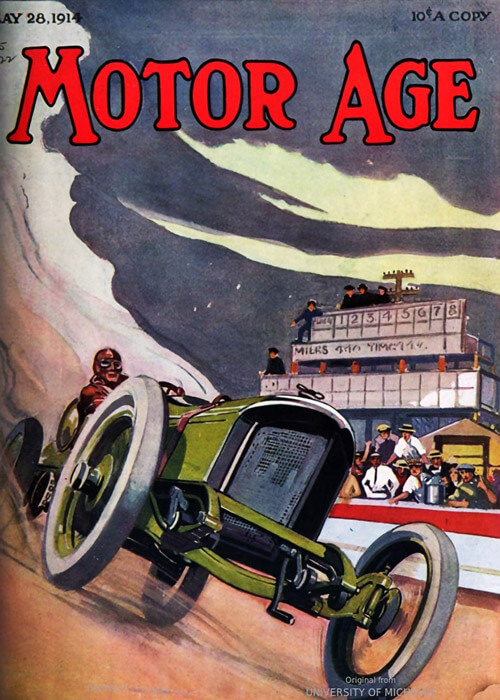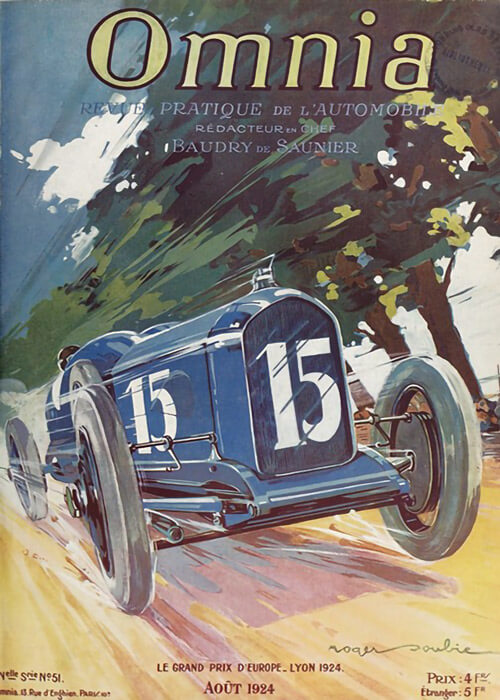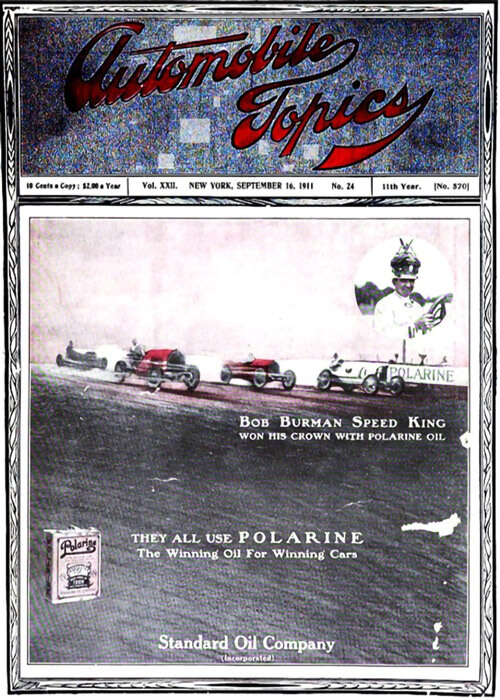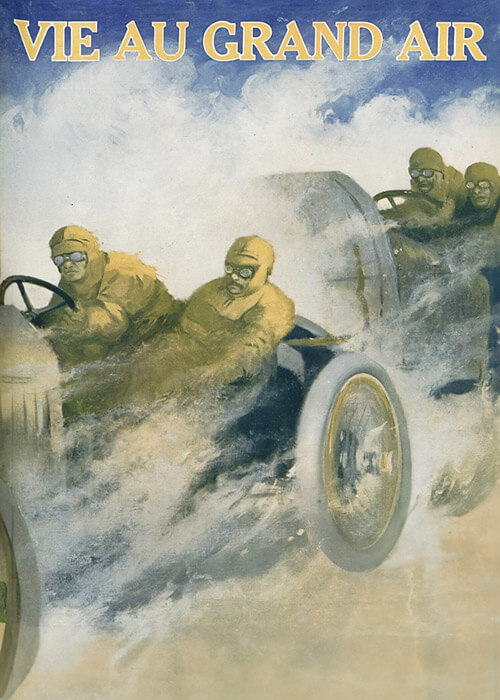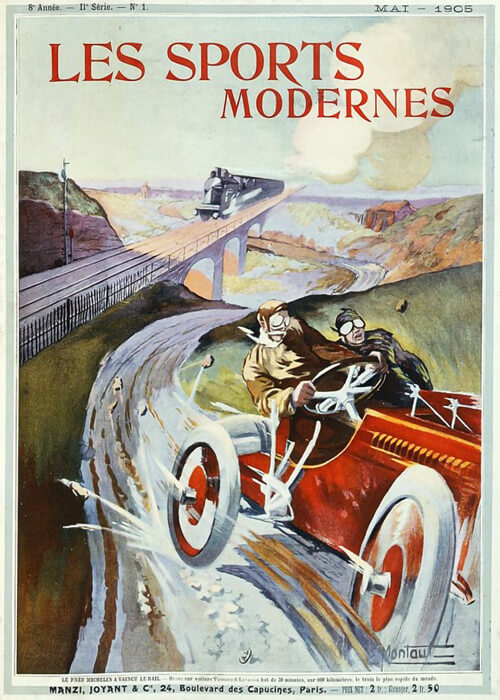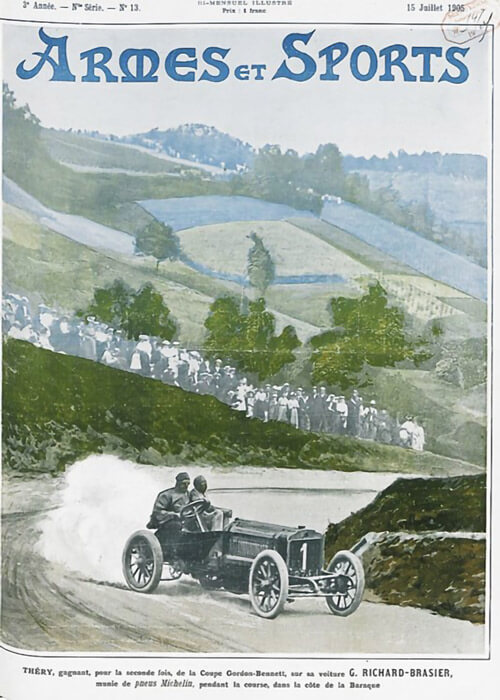Text and jpegs by courtesy of hathitrust.org www.hathitrust.org, compiled by motorracinghistory.com
Motor Age, Vol. 47, No. 23, June 4 +18, 1925
MOTOR AGE’S PICTURE PAGES OF THE INDIANAPOLIS RACE
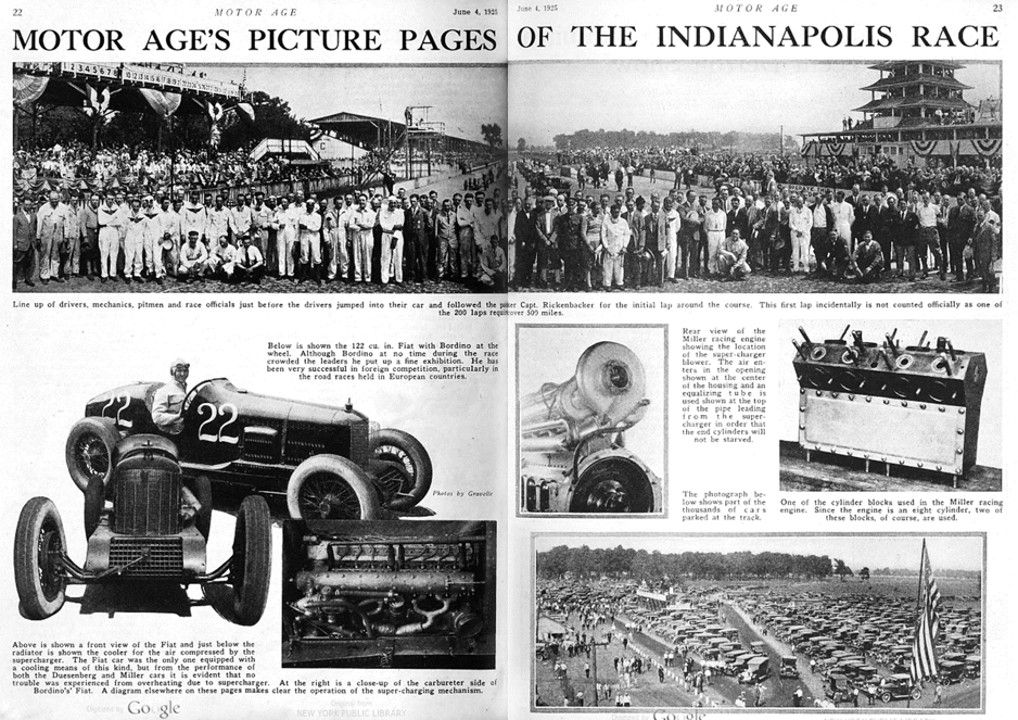
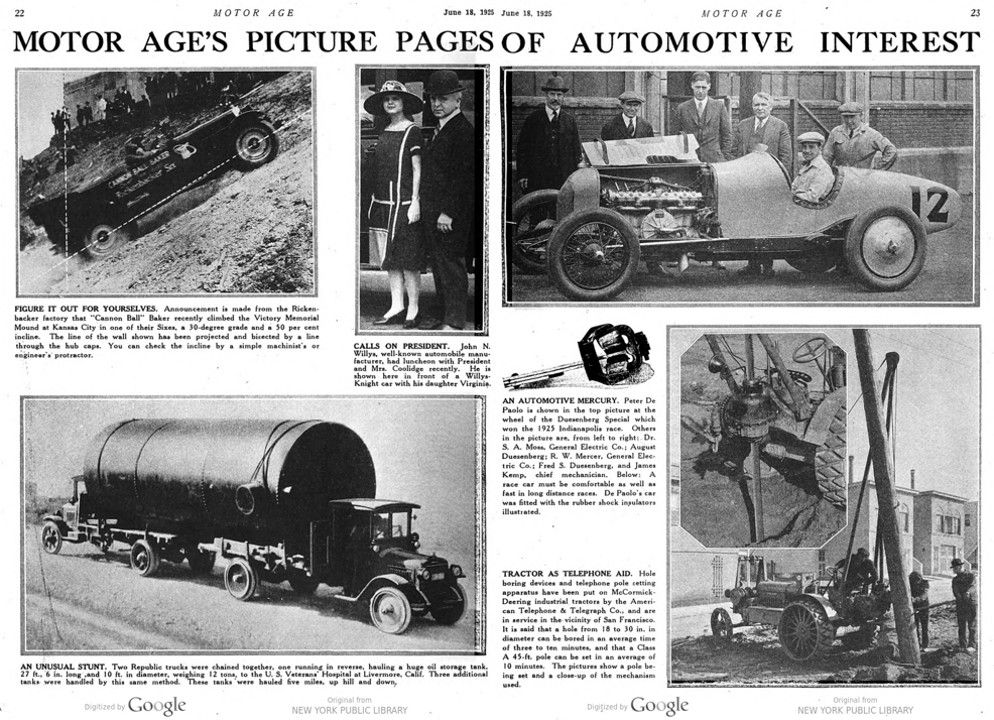
Photo captions June 4, 1925
Line up of drivers, mechanics, pitmen and race officials just before the drivers jumped into their car and followed the pacemaker Capt. Rickenbacker for the initial lap around the course. This first lap incidentally is not counted officially as one of the 200 laps required to cover 500 miles.
Below is shown the 122-cu. in. Fiat with Bordino at the wheel. Although Bordino at no time during the race crowded the leaders he put up a fine exhibition. He has been very successful in foreign competition, particularly in the road races held in European countries. Photos by Gravelle.
Above is shown a front view of the Fiat and just below the radiator is shown the cooler for the air compressed by the supercharger. The Fiat car was the only one equipped with a cooling means of this kind, but from the performance of both the Duesenberg and Miller cars it is evident that no trouble was experienced from overheating due to supercharger. At the right is a close-up of the carbureter side of Bordino’s‘ Fiat. A diagram elsewhere on these pages makes clear the operation of the super-charging mechanism.
Rear view of the Miller racing engine showing the location of the super-charger blower. The air enters in the opening shown at the center of the housing and an equalizing tube is used shown at the top of the pipe leading from the super- charger in order that the end cylinders will not be starved.
One of the cylinder blocks used in the Miller racing engine. Since the engine is an eight cylinder, two of these blocks, of course, are used.
The photograph below shows part of the thousands of cars parked at the track.
AN AUTOMOTIVE MERCURY, June 18, 1925
Peter De Paolo is shown in the top picture at the wheel of the Duesenberg Special which won the 1925 Indianapolis race. Others in the picture are, from left to right: Dr. S. A. Moss, General Electric Co.; August Duesenberg; R. W. Mercer, General Electric Co.; Fred S. Duesenberg, and James Kemp, chief mechanician. Below: A race car must be comfortable as well as fast in long distance races. De Paolo’s car was fitted with the rubber shock insulators illustrated.

This first lap incidentally is not counted officially as one of the 200 laps required to cover 500 miles. Piture source: hathitrust.org
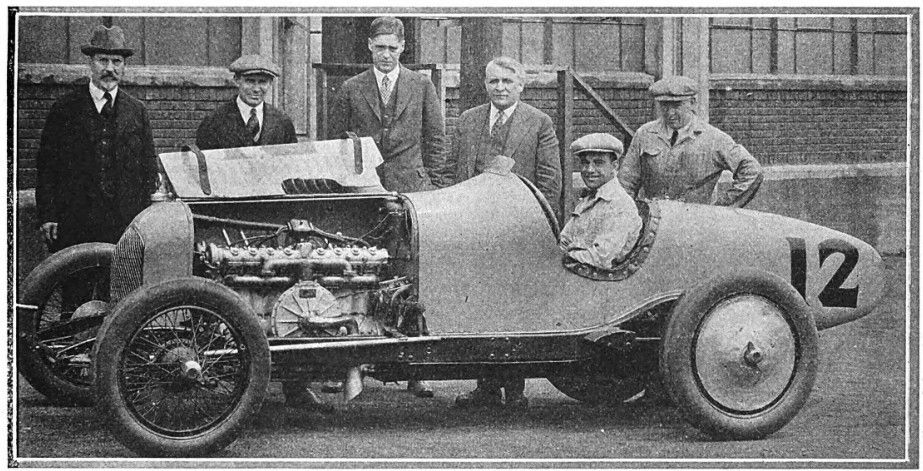
AN AUTOMOTIVE MERCURY.
Peter De Paolo is shown in the top picture at
the wheel of the Duesenberg Special which won
the 1925 Indianapolis race. Others in the picture
are, from left to right: Dr. S. A. Moss, General Electric
Co.; August Duesenberg; R. W. Mercer, General
Electric Co.; Fred S. Duesenberg, and James Kemp,
chief mechanician. Below: A race car must be
comfortable as well as fast in long distance races.
De Paolo’s car was fitted with the rubber shock
insulators illustrated.
Picture source: hathitrust.org
